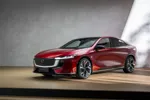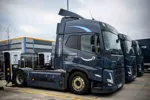The modern standard for electric vehicle batteries is lithium-ion, often with an iron phosphate or manganese cathode chemistry.
It offers three times the energy density of technologies such as nickel-metal hydride, similar to nickel cadmium, which is used in hybrids, and is generally cheaper, safer and easier to make.
Lithium-ion batteries are also made of non-toxic elements which makes them easier to recycle and dispose of. They also maintain their charge when parked up rather than gradually cannibalising their own energy for temperature control.
Energy density is the key to battery development, translating into greater range for electric vehicle (EV) drivers. Range currently averages from 80 miles up to 100 miles.
Range, payload weight and battery size are inextricably linked; the further you want to go or the more you want to carry without recharging, the larger or more energy-intensive the battery must be.
Battery is highest cost in an EV
This is the major factor which makes EVs so expensive upfront; effectively the user is paying a huge proportion of fuel costs on purchase. Allan Paterson, electrochemical engineer at Axeon, says: “The battery is the biggest cost in an EV. 60% of that cost is the cells; and 60% of cell cost is the materials needed for the cathode.”
This means that although battery technology has halved in the past three years as cheaper elements have been utilised, even high volume production will not completely mitigate the price of the chemicals needed.
“We will see cell costs halve in the next five to 10 years, but the price will struggle to come down further,” says Paterson.
“Currently costs run to $600/kWh and the target is to bring them down to $300. But that will be a struggle.”
Manufacturers are not just beleaguered by a lack of volume production, but face heavy costs in R&D, patents and establishing plant infrastructure, all of which they will be recouping over the next couple of generations of product.
Lithium-ion batteries have no memory effects – so they can be part charged without degrading capacity.
However, the same cannot always be said for fast or rapid charging. The faster energy is poured into and out of the battery, the hotter it gets and the less stable its environment; this will affect performance.
Rapid charging – using DC current – is extremely fast; for instance, APT Technologies’ DC charger can charge a vehicle to 80% capacity in 15 minutes, but business development manager Justin Meyer admits: “In reality DC charging, and thereby over-heating, will probably degrade 20% of the capacity.”
Although the rapid charging debate continues, it is highly likely that many motorists, and particularly fleet managers keen to sweat the asset, will see gradual battery degradation as an acceptable cost against higher productivity and a faster return on investment.
More on page two...

















Kate Glancy - 10/04/2014 12:59
Informative and helpful